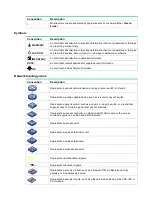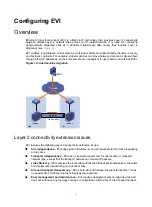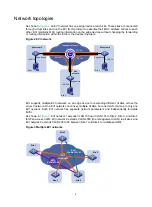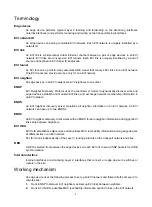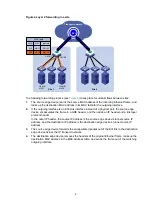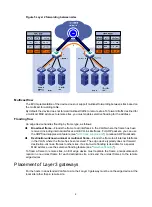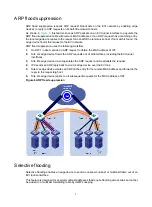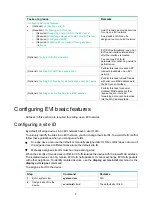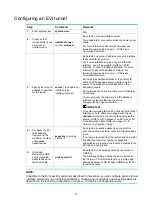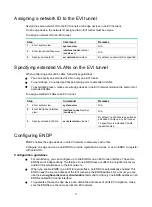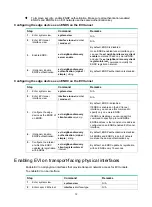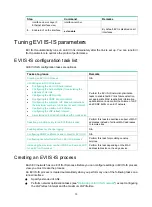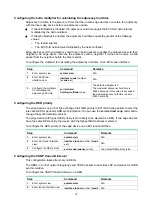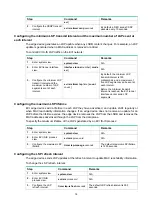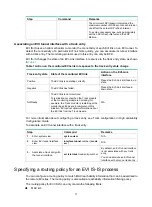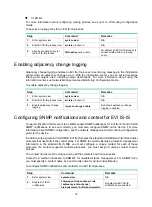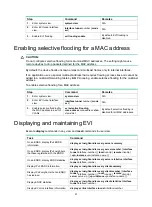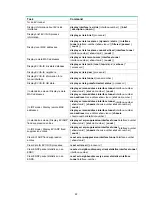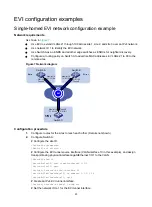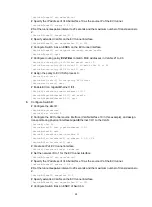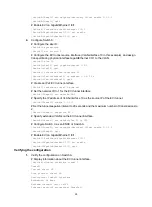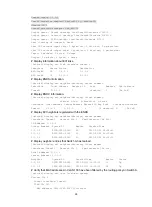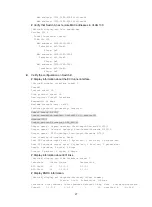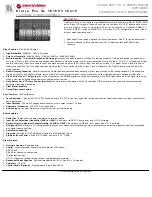
12
•
To improve security, enable ENDP authentication. Make sure all authentication-enabled
ENDCs and ENDSs in an EVI network use the same authentication key.
Configuring the edge device as an ENDS on the EVI tunnel
Step Command
Remarks
1.
Enter system view.
system-view
N/A
2.
Enter EVI tunnel
interface view.
interface tunnel number
[
mode evi
]
N/A
3.
Enable ENDS.
evi neighbor-discovery
server enable
By default, ENDS is disabled.
On an ENDS-enabled tunnel interface, you
can use the
evi neighbor-discovery client
enable
command to add one more ENDS,
and use the
evi neighbor-discovery client
register-interval
command to modify the
ENDC registration interval.
4.
(Optional.) Enable
ENDP authentication.
evi neighbor-discovery
authentication
{
cipher
|
simple
}
string
By default, ENDP authentication is disabled.
Configuring the edge device as an ENDC on the EVI tunnel
Step Command
Remarks
1.
Enter system view.
system-view
N/A
2.
Enter EVI tunnel
interface view.
interface tunnel number
[
mode evi
]
N/A
3.
Configure the edge
device as the ENDC of
an ENDS.
evi neighbor-discovery
client enable server-ip
By default, ENDC is disabled.
If ENDS is enabled on the EVI tunnel
interface, you can use this command to
specify only one more ENDS.
If ENDS is disabled, you can repeat this
command to specify up to two ENDSs.
ENDS address is the tunnel source address
configured on an ENDS-enabled EVI tunnel
interface.
4.
(Optional.) Enable
ENDP authentication.
evi neighbor-discovery
authentication
{
cipher
|
simple
}
string
By default, ENDP authentication is disabled.
All ENDSs and ENDCs in an EVI network
must use the same authentication key.
5.
Configure the interval
at which the ENDC
updates its registration
with ENDSs.
evi neighbor-discovery
client register-interval
interval
By default, an ENDC update its registration
with an ENDS every 15 seconds.
Enabling EVI on transport-facing physical interfaces
Enable EVI on all physical interfaces that provide transport network access for EVI tunnels.
To enable EVI on an interface:
Step Command
Remarks
1.
Enter system view.
system-view
N/A
2.
Enter Layer 2 Ethernet
interface interface-type
N/A

